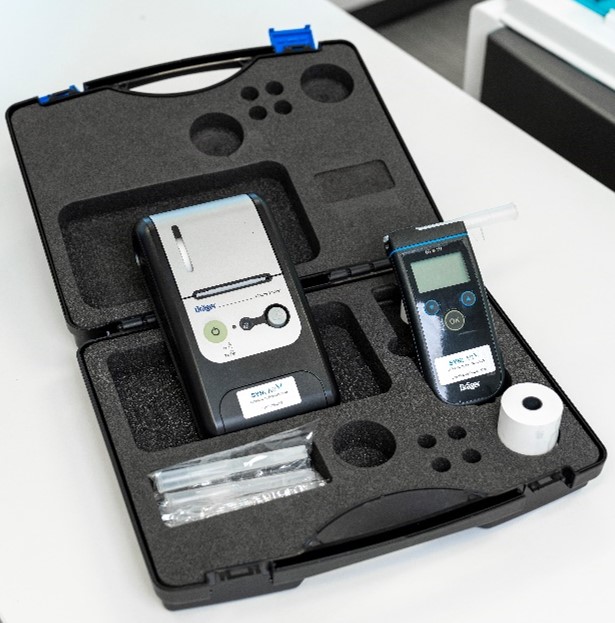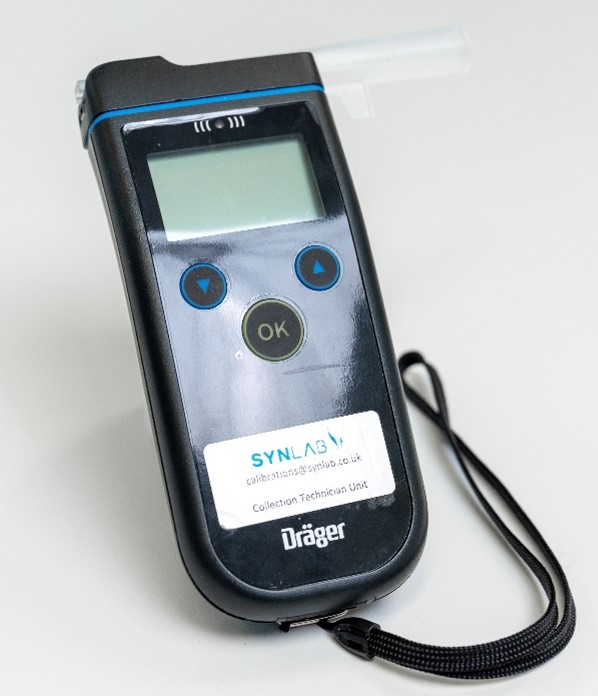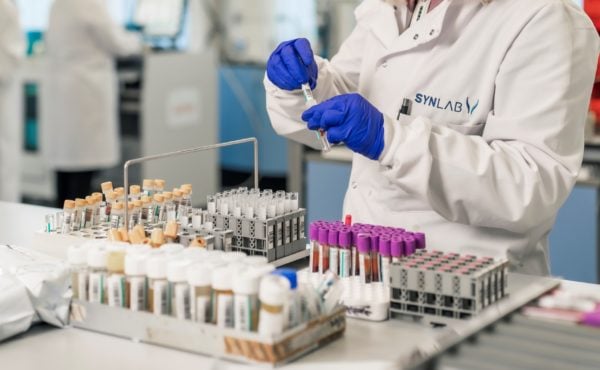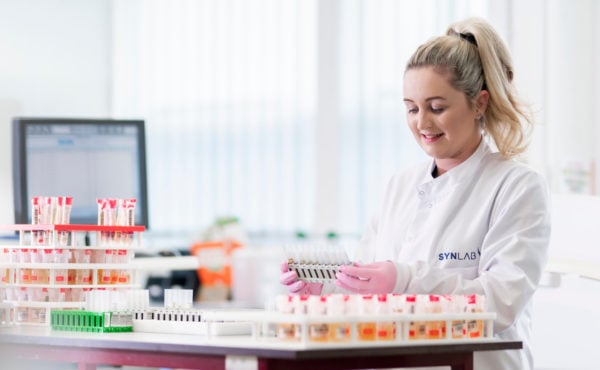SYNLAB Laboratory Services is changing the units of measure on breathalysers over the coming months to bring them in line with the UK Police Forces. This may have an impact on your use of breathalysers and alcohol testing.
We are committed to ensuring you receive the best service and support at all times. Please fully read the information below to understand any potential impact, and allow us to help you with this key improvement.
What’s changing?

SYNLAB Laboratory Services Ltd. provides breathalyser units to our clients along with our SYNLAB Collection Technicians. The result readings have historically been reported in the unit PERMILLE (symbol ‰). This unit is standard in parts of Europe and has been written into the drug and alcohol Policies of many of our customers.
Interpretation of blood alcohol can be complicated, with many possible reporting units (‰, %, mg/L, µg/100mL, mg/100mL, mg/dl and more). The results we produce are blood alcohol results, even though the measurement is done in breath.
At SYNLAB we have been reviewing our policies along with feedback from our clients and it is evident that a vast majority of our customers prefer the results in line with the unit of measure used by the UK’s Police Forces (µg/100mL). More information on this can be found at: https://www.drinkdriving.org/drink_driving_information_breathalysers.php
What does this mean to you?
In future, any units returned or purchased with us will automatically be calibrated to µg/100mL instead of PERMILLE (symbol ‰).
We hope this this will help make it easier for you to interpret the results in line with the drink drive limit.
Following this change the common alcohol limits will be:
| Source of limit | Alcohol Limit (µg/100mL) |
| UK Drink Drive | 35 |
| Scotland drink drive | 22 |
| Network Rail | >13 |
| Aviation | >9 |
Please note if you wish to continue to have your breathalyser displaying PERMILLE (‰) then please let us know by emailing us at: [email protected]

You do not need to do anything right now, we will notify you when your breathalyser is due for calibration.
SYNLAB Laboratory Services Ltd. has a large network of Collection Technicians around the country to support customers who do not do their own breathalyser measurements. We will begin a program of conversion to calibrate all of these breathalysers to the µg/100mL units; this will be a phased approach due to the large number of units in the field. We will notify you once all units have been calibrated to the new unit of measure, however, we will improve our internal procedures so that our Collection Technicians can give you the results in the new units during the collection.
Cut-off values
In 2001, SYNLAB Laboratory Services Ltd. played a leading role in the development of the UK Laboratory Guidelines for Legally Defensible Workplace Drug Testing. These were the first UK guidelines ensuring that the results that we produce for you are able to be defended should you need to defend during a tribunal. These Guidelines have formed the basis of our drug testing for the last 20 years. Unfortunately, the body that developed these standards (The UK Workplace Drug Testing Forum) has not existed for several years and the Guidelines are no longer officially maintained.
The European Workplace Drug Testing Society (EWDTS) has developed their own Guidelines, based on the foundations built by the UK Workplace Drug Testing Forum.
The EWDTS actively maintains these Guidelines, which have become the standard to which many laboratories are adhering. In addition Network Rail have informed laboratories that these are the guidelines on which they will base their standards in the future.
As a result SYNLAB has decided that we will transition from the historic UK Guidelines to the EWDTS guidelines (date TBC).
What are the changes?
The EWDTS guidelines are very similar to the UK guidelines and the only significant changes are in a few cut-off values, as detailed below.
| Drug | UK Cutoff (ng/mL) | EWDTS cutoff (ng/mL) |
| Amphetamine primary screen | 300 | 500 |
| Amphetamine group confirmation | 200 | 200 |
| Cocaine primary screen | 300 | 150 |
| Cocaine confirmation (benzoylecgonine) | 150 | 100 |
| EDDP (methadone metabolite) | 250 | 75 |
| Ketamine confirmation | Not stated | 75 |
Further details of these Guidelines can be located here: http://www.ewdts.org/ewdts-guidelines.html
What does this mean for your business?
Most customers do not quote these cut-off values on their drug and alcohol policies, and as such, will not require action.
If your Drug and Alcohol Policy does quote the cut-off values, then it may be that this needs to be reviewed and amended, and your staff informed or consulted. We highly recommend that our customers Policies are in line with the recommendations outlined above. However, should you choose to opt for specific levels then please contact us immediately to discuss.
If have any questions regarding anything outlined in this email please don’t hesitate to contact us at: [email protected]




